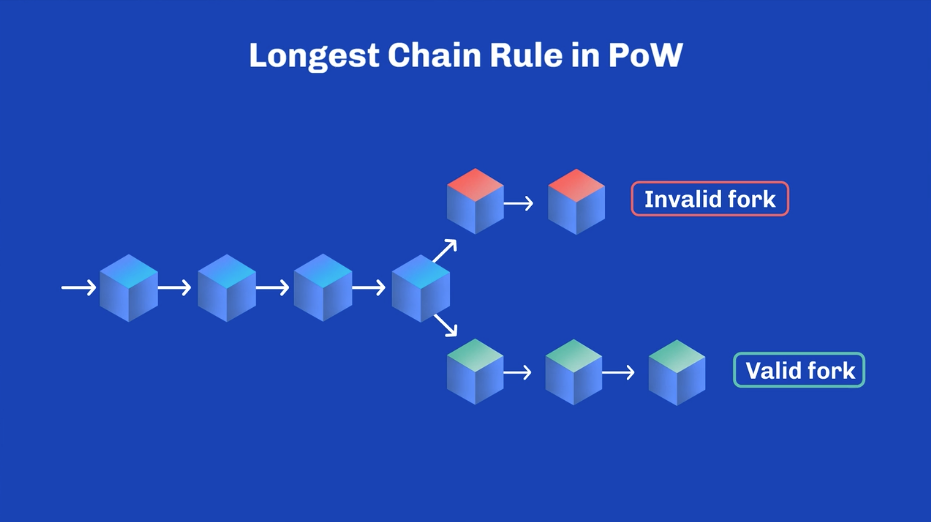The Longest Chain Rule is a fundamental concept in blockchain consensus mechanisms, particularly in Proof of Work (PoW) systems like Bitcoin. It states that the valid blockchain is the one that has the most accumulated work, meaning the chain with the most blocks or the greatest amount of computational power (difficulty) invested in it. In other words, the network always considers the longest chain, in terms of work, as the true and valid version of the blockchain.

How the Longest Chain Rule Works:
- Forking: Occasionally, different parts of the network may temporarily diverge, creating competing chains (forks). This can happen when two miners solve a block at nearly the same time, causing a brief split in the blockchain.
- Resolving the Fork: When such a fork occurs, nodes will continue mining and extending the chain they see. As more blocks are added to one of the chains, the network eventually converges on the chain with the most proof-of-work, as it represents the majority of computational power.
- Reorganization: Once a longer chain is established, the network abandons shorter chains, and all nodes switch to the longest chain. This process is known as chain reorganization or chain reorg, ensuring that the blockchain maintains a single, authoritative version of the ledger.
- Security Assumption: The longest chain rule ensures that an attacker would need to control more than 50% of the total mining power (a 51% attack) to override the honest chain. The attacker would have to mine a longer chain faster than the rest of the network to create a new longest chain, which would then be accepted as the valid chain by the network.
Why It’s Important:
- Consensus: The longest chain rule is essential for maintaining decentralized consensus. It ensures that all nodes in the network agree on the same version of the blockchain without needing central authority.
- Prevention of Double-Spending: By following the chain with the most accumulated work, the longest chain rule helps prevent double-spending attacks where a malicious actor might attempt to spend the same cryptocurrency multiple times on different chains.
- Security: The rule makes it computationally expensive to attack the network, as an attacker would need to outpace the collective mining power of the network to rewrite the blockchain.
Longest Chain Rule in Other Consensus Mechanisms:
- In Proof of Stake (PoS) systems, the longest chain rule is not typically used, as these systems rely on stake-based incentives rather than computational work. For example, Cardano, which uses the Ouroboros PoS mechanism, selects block producers based on their staked ADA, and chain selection is determined by the protocol rules rather than the longest chain.
Summary:
The Longest Chain Rule is a key concept in blockchain networks, particularly in Proof of Work systems like Bitcoin, where it dictates that the valid blockchain is the one with the most accumulated work (or the longest chain). This rule ensures network consensus, security, and the prevention of double-spending, making it a cornerstone of decentralized blockchain systems.

Leave a Reply